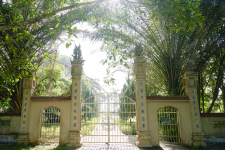
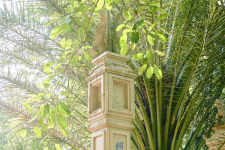
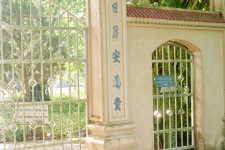
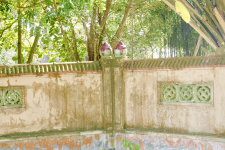
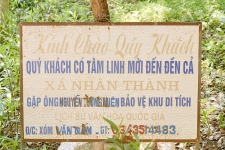
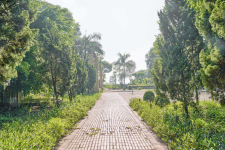
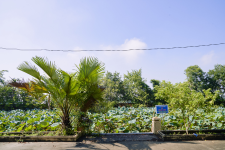
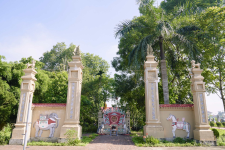
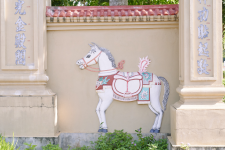
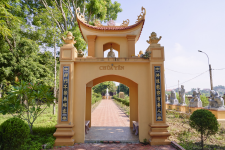
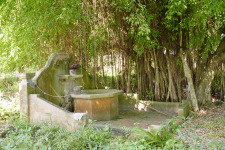
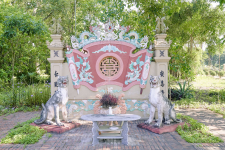
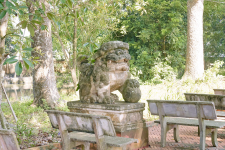
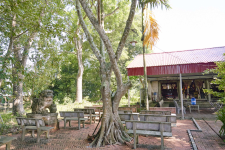
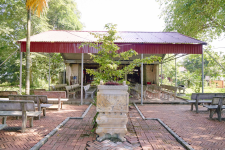
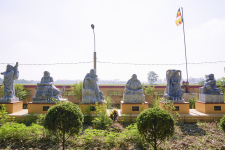
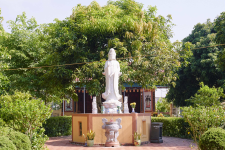
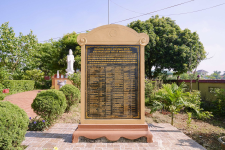
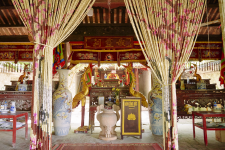
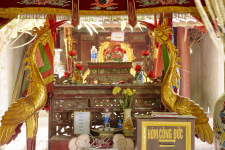
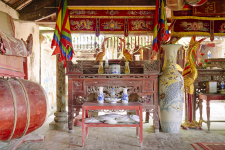
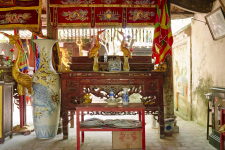
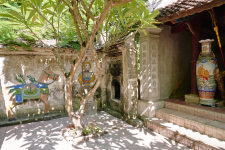
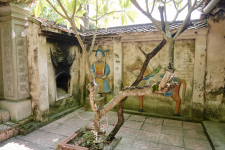
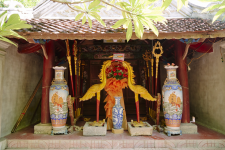
Camera tour
Price: Free
Time to visit a place: 120 phút
Open Time: 7:00 AM - Close Time: 6:00 PM
Address: Nhan Thanh Village, Yen Thanh District, Nghe An Province
ĐỀN CẢ - YÊN THÀNH
Ca Temple is now in Trung Thuan hamlet, Nhan Thanh commune, Yen Thanh district, Nghe An province, built by the People at the end of the Le Dynasty to worship gods who openly reclaimed land, recruited people to establish villages, and supported the people to be happy and prosperous such as Cao Son - Cao Cac, Four women (Three women of Nam Tong country include Mrs. Duong Nguyet Qua (King's mother), two princesses (Trieu Nguyet Khieu, Trieu Nguyet Huong), and a nanny) Holy Queens, Hoang Ta Thon, great precedent mandarin Tran Quoc Duy and many other tutelary gods.
The entire campus of Ca Temple has an area of 4500m2, surrounded by a fence of green trees, including the works: Nghi Mon, Bai Duong, the harem and ancillary works.
Nghi Mon is made up of 4 sharp pillars built in the style of a square pedestal with a bottom, on the top of which 4 phoenixes are covered with their backs, posing like a blooming flower, the bird's head is facing in all directions (internal sharp pillar) and two Toan Nghe (mythical animals) standing in the position of adoration inward (outer sharp pillar). Connecting the two sharp pillars in the middle with the two outer sharp pillars are two decorative wall panels for horse and elephant ships. The front of the sharp pillars are also emphasized by a couple of parallel sentences in Chinese characters.
Space in front of lineage hall has an area of 47.5m2, 8.5m long, 5m wide, built with wood, brick, tile and mortar, roof is covered with yin yang tiles, in the middle of the roof is embossed with two dragons adoring the moon, 02 corners of the house top-edge and 04 corners of the roof are decorated the same, all are stylized cloud patterns. The architectural structure of space in front of lineage hall is four-pillar style, the house frame is made of ironwood, the pillar system consists of 8 pillars connected with trusses, beams, lower beams, by solid woden-pegs and latch.
The harem is also the original building of the relic, located behind space in front of lineage hall, with an area of 39m2, 7.8m long, 5m wide.
Ca Temple is not only a place of spiritual and cultural activities of local people, but also a place to welcome tourists inside and outside the district to visit. Previously, Ca temple festival was held on January 15, called the spring festival and on June 15, it was called the Ky Phuc festival. These are considered as two solemn festivals of the temple to commemorate the merits of the village's tutelary gods and review the beauty of cultural traditions - beliefs of a countryside imbued with cultural identity of Nghe An.
In 2006, the temple was recognized as a National Historical - Cultural Relic. With cultural, historical and landscape values, the temple deserves to be a stopover for tourists when traveling to Yen Thanh district in general and Nhan Thanh commune in particular.
Distance: 5.10 km
Distance: 8.50 km
Distance: 9.71 km
Distance: 11.52 km
Distance: 11.81 km
Distance: 11.97 km
Distance: 12.33 km
Distance: 12.67 km
Distance: 12.75 km
Distance: 1.59 km
Distance: 1.95 km
Distance: 2.03 km
Distance: 9.08 km
Distance: 12.85 km
Distance: 13.23 km
Distance: 14.93 km
Distance: 15.13 km
Distance: 15.33 km
Distance: 17.20 km
Distance: 18.51 km
Distance: 0 m
Distance: 10 m
Distance: 210 m
Distance: 440 m
Distance: 3.10 km
Distance: 3.53 km
Distance: 3.54 km
Distance: 4.05 km
Distance: 4.42 km
Distance: 5.74 km
Distance: 5.85 km
Distance: 6.29 km
Distance: 6.39 km
Distance: 6.69 km
Distance: 8.21 km
Distance: 8.57 km
Distance: 9.04 km
Distance: 10.68 km
Distance: 870 m
Distance: 1.76 km
Distance: 1.97 km
Distance: 3.69 km
Distance: 9.15 km
Distance: 19.11 km



0
No Comment!